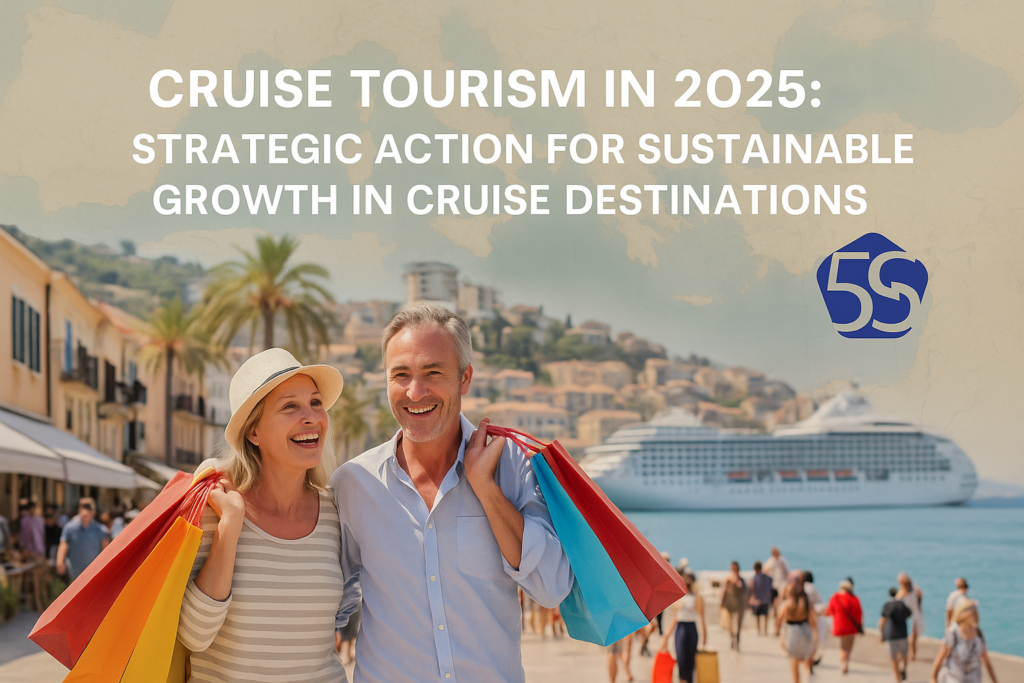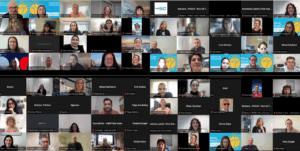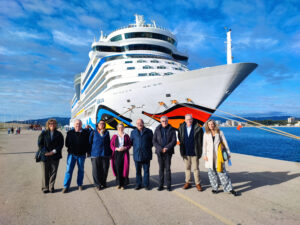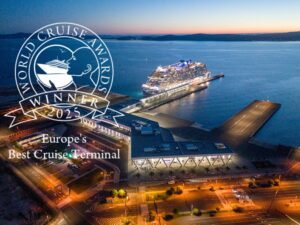The global cruise industry is on a clear path of recovery and growth. According to CLIA’s 2025 State of the Cruise Industry Outlook, over 37.7 million passengers are expected this year, with more than 310 ships sailing worldwide. This sustained momentum creates new opportunities – and sharper challenges – for destinations aiming to stand out.
In this context, no port or destination can afford to be passive. To be competitive, it takes at least a three-year plan, a clear destination strategy that is informed by the destination’s capacity (Port and land), and the support of seasoned professionals with international reach and access to cruise line decision-makers.
Destinations that have already made progress in the Mediterranean can further integrate their unique identity, history, culture, gastronomy, and adventure into cohesive offerings. Meanwhile, emerging ports can position themselves as strong alternatives by building themed experiences, strengthening land infrastructure, and connecting local entrepreneurship to the cruise value chain.
At Five Senses Consulting, we’ve supported over 60 destinations worldwide and have seen firsthand what works. Below are 10 DOs and 10 DON’Ts that, when implemented with consistency and vision, will lead to measurable results, including stronger visitor engagement and long-term tourism growth. Over 50% of cruise passengers return as regular tourists, underlining the value of a well-designed cruise experience.
This is our message ahead of the MedCruise General Assembly in Cartagena: Cruises are not just a channel for arrivals. They are catalysts for development.
✅ 10 DOs for Cruise Destinations
1. Develop a Comprehensive Excursion Book
Build a structured, professional guide for the cruise lines’ shorex departments that includes all available experiences – categorised by Cruise category, theme, duration, difficulty, and logistics – with images, with the right to use. This is the primary tool for cruise lines to assess and select.
2. Offer Intelligent Wayfinding and Navigation
Use multilingual signage, interactive maps, QR/NFC technology, and mobile-friendly content to ensure seamless, self-guided exploration. Empowering visitors with orientation tools enhances satisfaction and safety.
3. Provide Free Wi-Fi in Key Areas
Stable internet access near the port and in core tourist zones encourages independent exploration, helps visitors stay informed, and increases the chance of social media sharing, boosting the destination’s online presence.
4. Ensure Efficient Mobility and Welcome Facilities
Create shaded areas, shuttle transport if necessary, signage, and clear pedestrian access from the port to the City centre. The ease of movement directly impacts visitor impressions and time spent ashore.
5. Maintain Continuous Dialogue with Cruise Lines
Go beyond seasonal coordination. Provide timely updates, collaborate in itinerary planning, and foster long-term relationships. Communication leads to integration.
6. Invest in Crew-Oriented Services
Crew members are active consumers and powerful influencers. By providing resting areas, discounts, access to amenities, and digital connectivity, you can build loyalty and recurring economic impact.
7. Promote Immersive, Local-First Experiences
Cruise guests want authenticity. Enable them to be part, craft, learn, and connect with local life. Turn passive sightseeing into sensory participation rooted in the destination’s soul.
8. Enable Digital Booking and Safety Info Access
Allow for seamless online bookings, real-time availability, and immediate access to emergency contacts. Digital readiness fosters independence and confidence.
9. Design Alternative Routes to Avoid Congestion
Distribute foot traffic by highlighting lesser-known points of interest and designing thematic trails that reflect the diversity of the destination beyond the main square.
10. Activate the Nighttime Economy
Longer port stays open a window for nighttime culture: open-air shows, markets, tasting events, and guided walks. This adds value to the visit and stimulates local business.
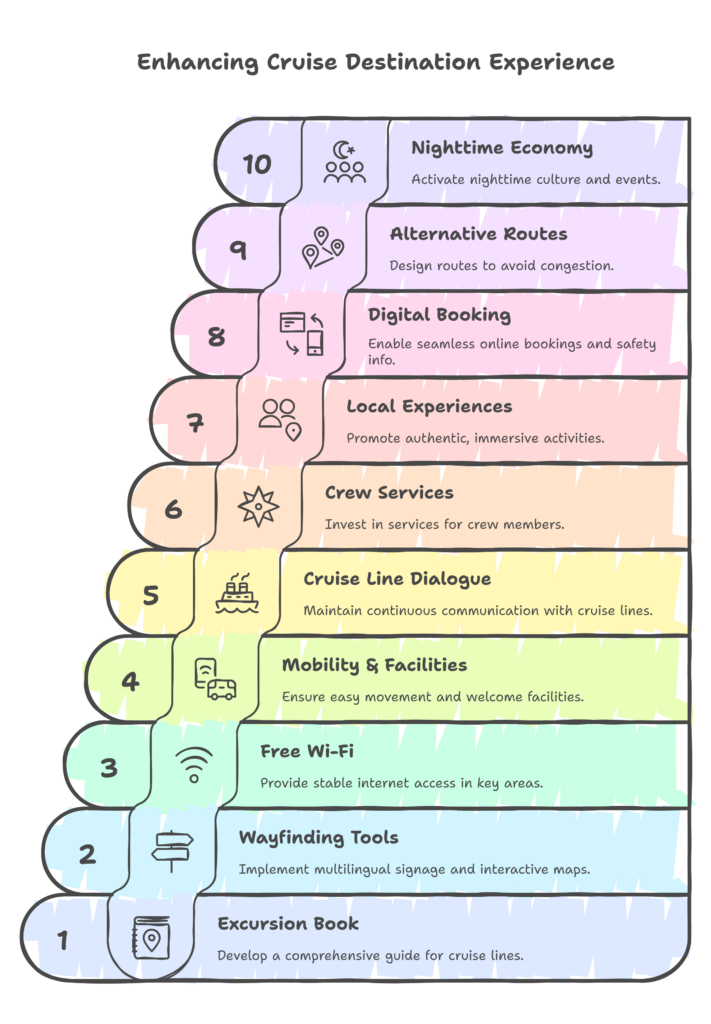
❌ 10 DON’Ts to Avoid
1. Don’t Assume Spending Will Happen Automatically
Spending only happens when the experience is enjoyable, accessible, and clearly communicated. Otherwise, guests return to the ship.
2. Don’t Overload the Same Sites
Congestion weakens the experience for everyone. To protect capacity and guest enjoyment, plan for dispersion and manage group timing.
3. Don’t Overprice or Hide Costs
Trust is built on price fairness and transparency. Overcharging, inconsistency, or announcing new fees without discussion or long notice leads to bad reviews and reduced returns.
4. Don’t Neglect Core Infrastructure
Basic amenities (accessibility, toilets, sidewalks, shelter, signage) are fundamental. Cleanliness and comfort should never be an afterthought.
5. Don’t Ignore Pre-Arrival Visibility
Many decisions are made before guests board. If your destination lacks online presence, you’re invisible. Invest in content, SEO, and social visibility.
6. Don’t Rely Only on Shore Excursion Packages
The rise of independent travellers means you must offer options outside the cruise operator. Think self-guided, bookable, and safe.
7. Don’t Overlook Sustainability
Today’s traveller (and cruise company) values responsibility. Environmental and social sustainability should be embedded and visible.
8. Don’t Undervalue the Crew Experience
If crews feel unwelcome or unsupported, they won’t disembark – and may dissuade others. Make them feel part of the destination.
9. Don’t Let Your Online Image Lapse
A poor or outdated web presence erodes trust. Update your listings, respond to reviews, and show you care about perception. What’s your LinkedIn presence?
10. Don’t Miss the Repeat Opportunity
The cruise visit is the first impression. But with the right follow-up, it becomes the beginning of a longer story. Capture contact, engage post-visit, and invite them back.
Cruise tourism in the Mediterranean is evolving fast. Destinations that adapt, plan, and listen will attract ships and build communities, value, and long-term prosperity.
Ioannis Bras
CEO of Five Senses Consulting
www.fivesensesconsulting.com | LinkedIn.com/in/ioannisbras
